9 Crucial Elements in Crafting the Perfect Corridor Design

Table of Contents
In the intricate tapestry of interior design, the often underestimated corridor design plays a pivotal role in shaping the overall ambiance of your home.
In our journey through interior design, corridors frequently find themselves in the shadows, yet their impact on the overall ambiance is undeniable.
Think of them as the connective tissue, seamlessly weaving through your living spaces.
By delving into the nuances of corridor design, we unlock the gateway to a realm where functionality and aesthetics converge.
This isn’t just about navigating from one room to another; it’s about transforming these transitional spaces into dynamic elements that contribute to the soulful resonance of your home.
So, let’s step into the world of corridor design, where the ordinary becomes extraordinary, and each step tells a story of thoughtful design choices.
Here are the 9 main key aspects to focus on in corridor design:
A. Proportions and Optimal Width for Accessibility and Spatial Perception:
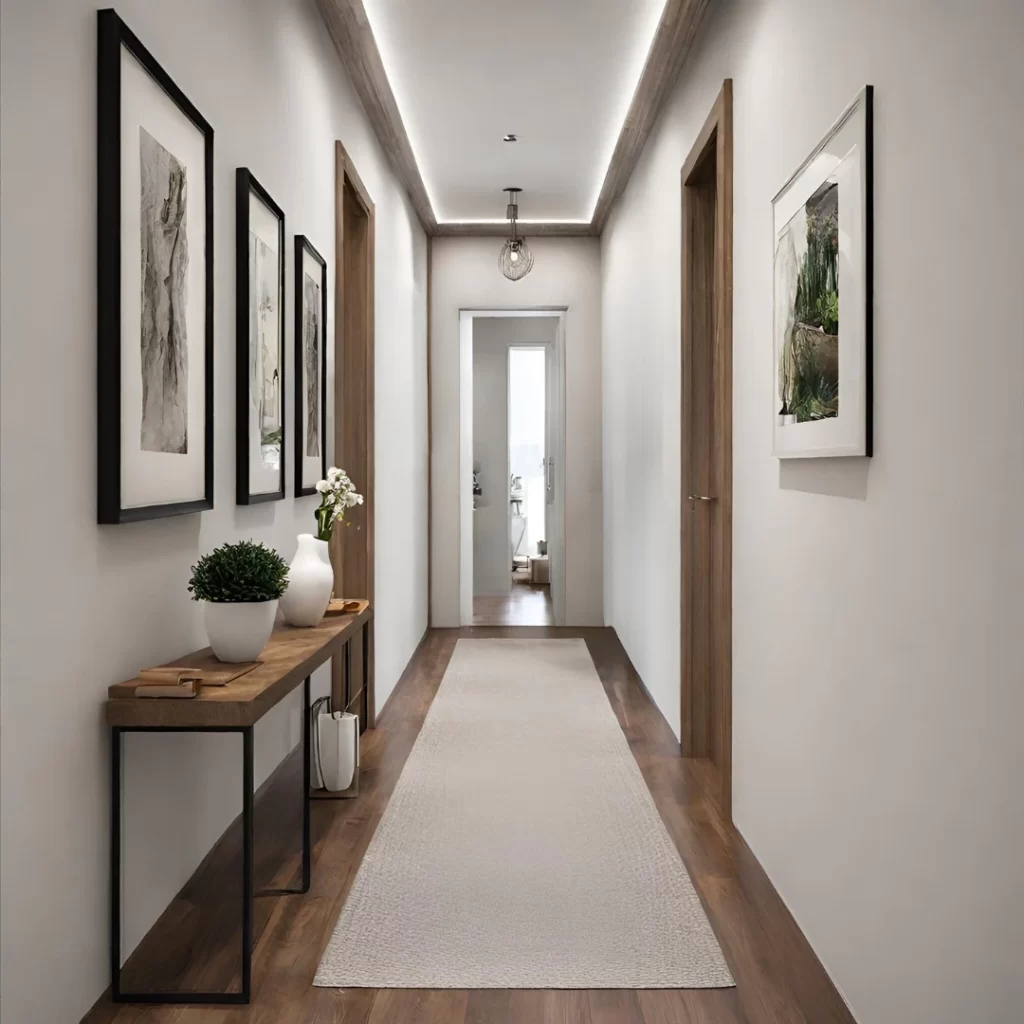

Accessibility: Ensure that the corridor is wide enough to accommodate easy movement, especially for individuals using mobility aids.
Adhering to accessibility standards ensures inclusivity and caters to the needs of all residents.
Traffic Flow: Consider the expected traffic flow within the home.
Tailor the width of the corridor to accommodate the number of household members and ensure smooth movement without congestion.
B. Acoustic Considerations for a Tranquil Corridor Design Experience:
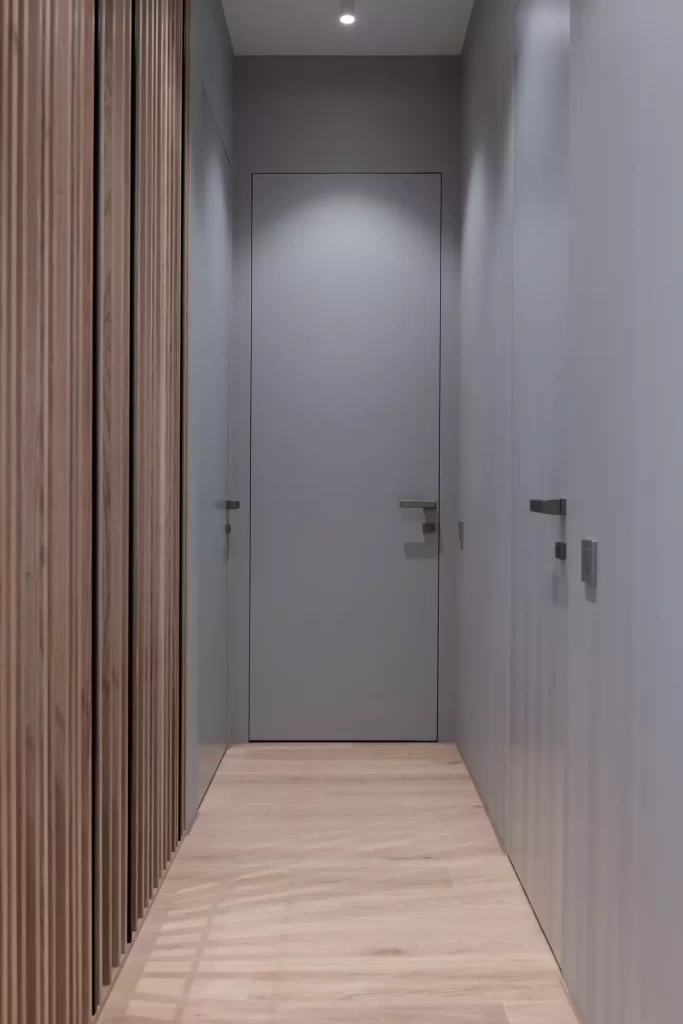

Noise Control: Implement measures to control noise within the corridor.
Choose materials with sound-absorbing properties for walls and ceilings to create a peaceful environment.
Flooring Choices: Opt for flooring materials that dampen sound, such as carpets or those with sound-absorbing qualities, to minimize footstep noise and prevent echoing in residential hallways.
C. Material Selection and Durability for Aesthetics and Low Maintenance:

Durability: Prioritize durable materials that can withstand daily wear and tear, ensuring the longevity of the corridor’s appearance.
Opt for scratch-resistant flooring and impact-resistant wall coverings to maintain the corridor’s aesthetic appeal.
Maintenance: Choose materials that are easy to clean and resistant to stains, minimizing the need for frequent upkeep.
This ensures a practical and visually appealing corridor design in the house.
D. Exploring the Transformative Power of Lighting in Corridor Design:
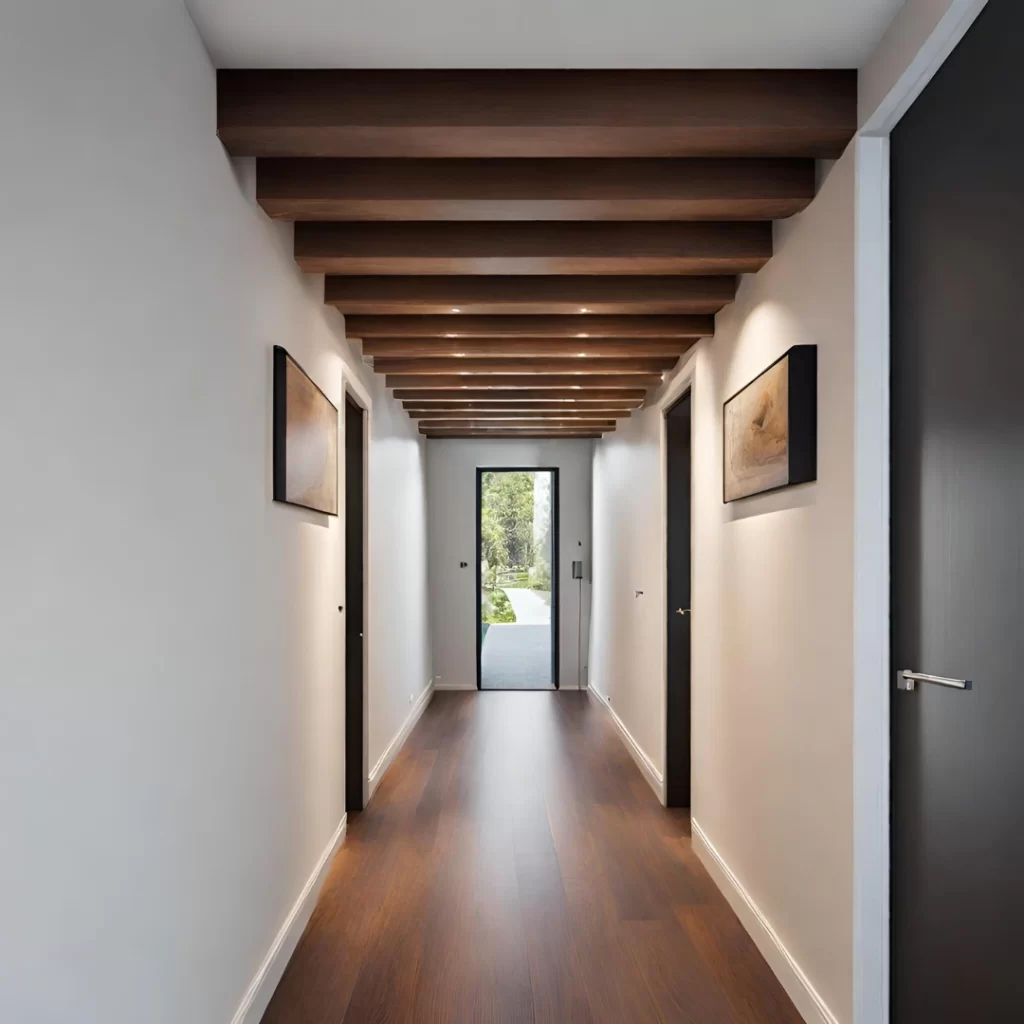

Ambiance Creation: Lighting plays a pivotal role in transforming the ambiance of corridor spaces.
Consider the use of different lighting fixtures, such as sconces, pendant lights, or recessed lighting, to create varying levels of illumination.
By strategically placing lights along the corridor, you can evoke different moods, from a cozy and intimate atmosphere to a bright and energetic one.
Enhancing Architectural Features: Thoughtfully placed lighting can accentuate and highlight key architectural features within the corridor, such as artwork, niches, or unique wall textures.
This not only adds visual interest but also contributes to a dynamic and well-curated corridor design.
Natural Light Integration: Whenever possible, leverage natural light to enhance the corridor environment.


Consider incorporating windows, skylights, or glass doors to bring in daylight, creating a bright and airy atmosphere.
Natural light has the added benefit of positively impacting the overall well-being of the people in the house.
Task Lighting: If the corridor serves multiple functions, such as a small study office or reading nook, incorporate task lighting to ensure adequate illumination for specific activities.


Adjustable fixtures or wall-mounted lights can provide targeted lighting where needed.
E. Crafting a Color Palette that Complements the Overall Home Theme:
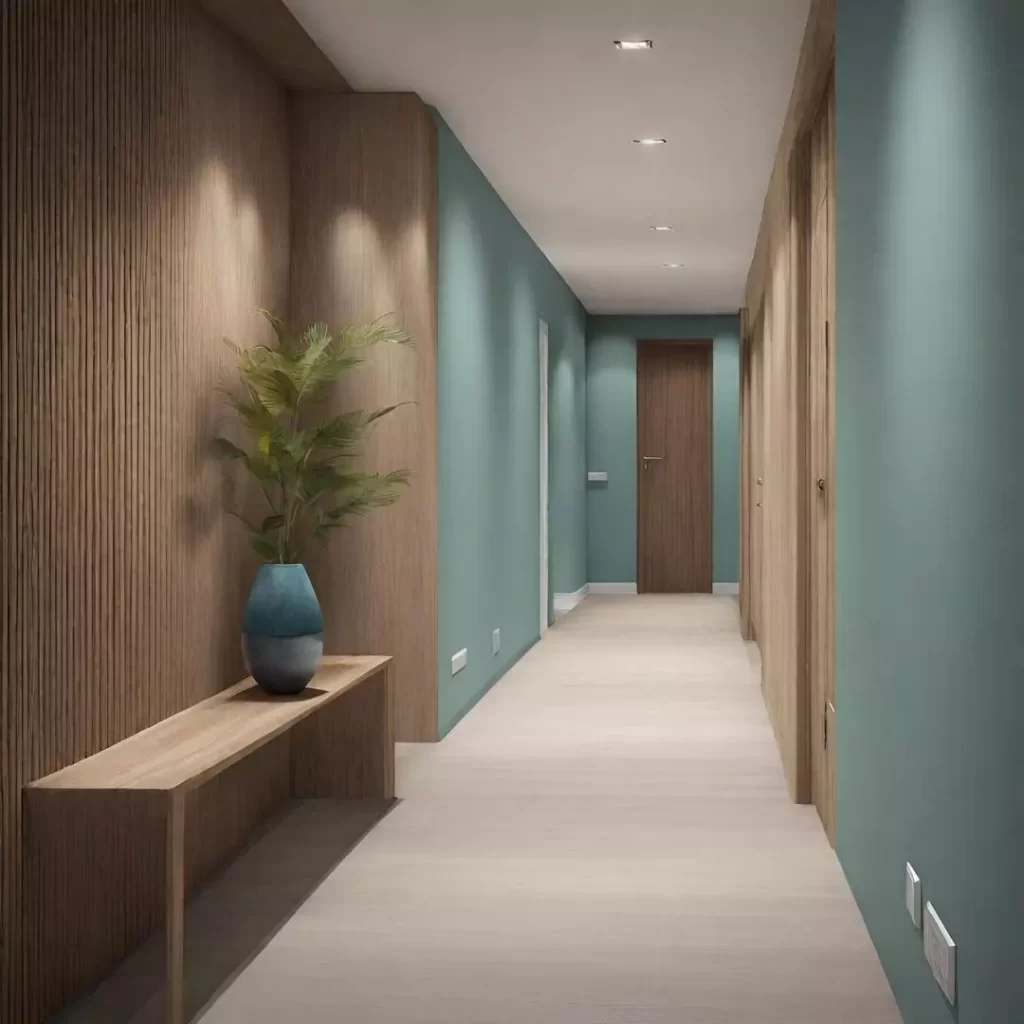
Continuity with Home Aesthetics: The color scheme chosen for the corridor should harmonize with the overall aesthetic of the home.
Consider extending or complementing the colors used in adjacent rooms to create a sense of continuity and flow throughout the living space.
Reflecting Natural Tones: Opt for colors that reflect or complement natural elements, such as earthy tones or calming blues and greens.
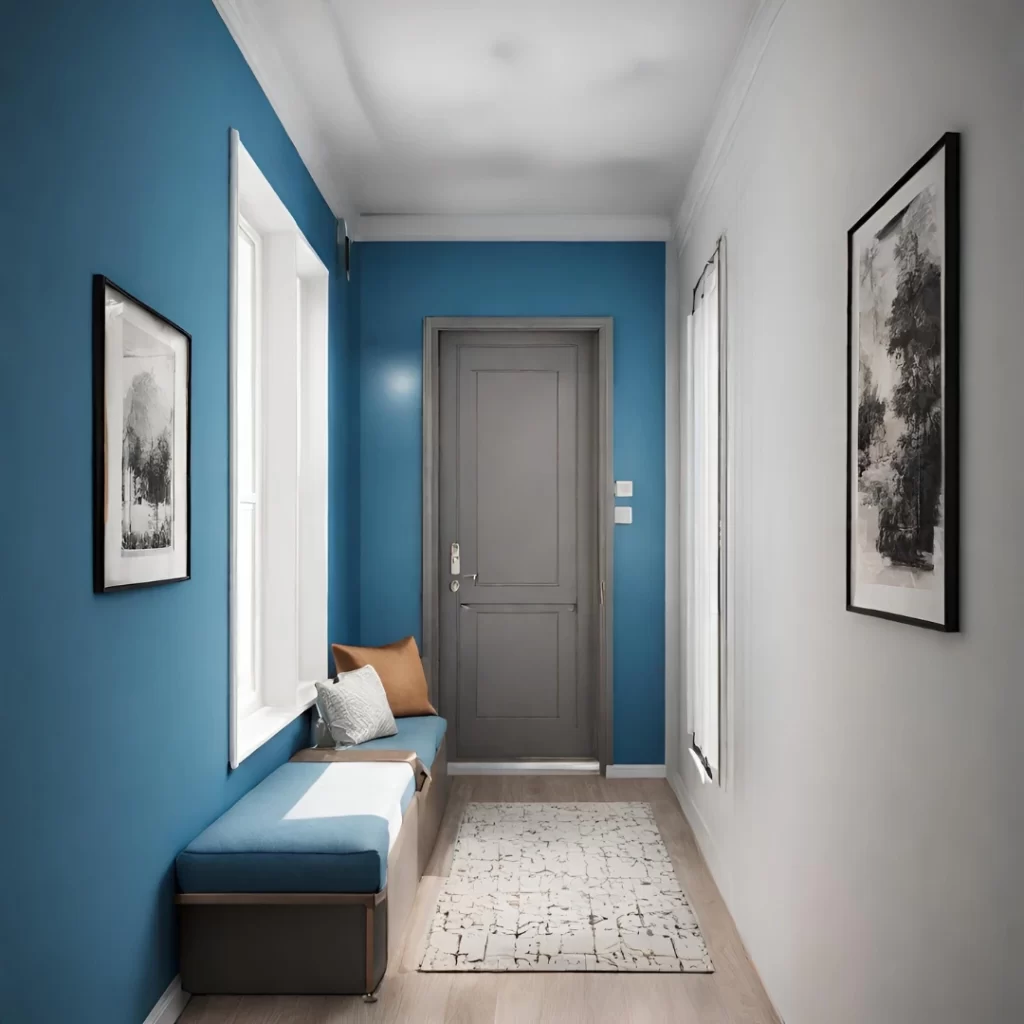
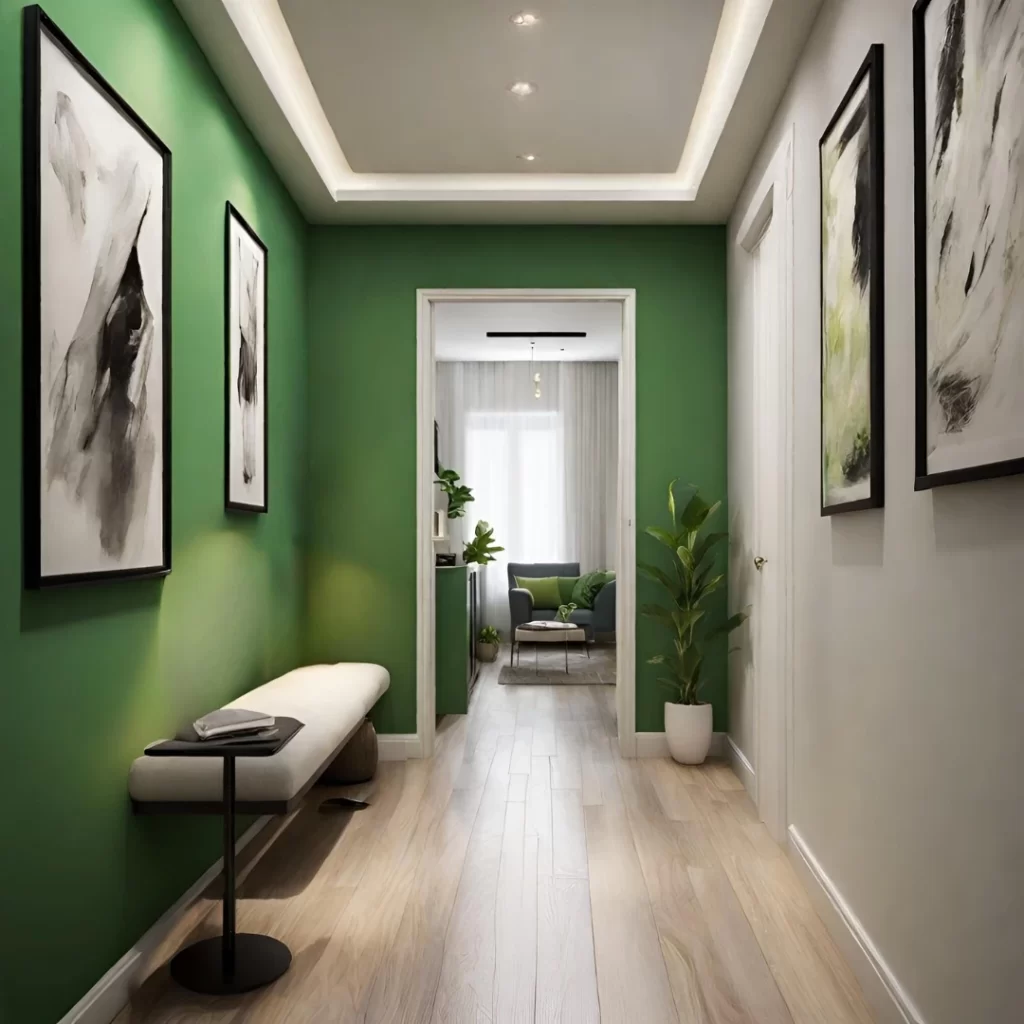
These hues can create a serene and welcoming environment, making the corridor feel like a seamless part of the home.
Use of Accent Colors: Introduce accent colors strategically to add visual interest and break up monotony.
These can be incorporated through artwork, decor items, or even accent walls.
Carefully chosen accents can inject personality into the corridor design without overwhelming the space.
F. Making the Most of Limited Space through Strategic Furniture Placement:
Multi-Functional Furniture: Opt for furniture pieces that serve dual purposes to maximize the utility of the corridor.

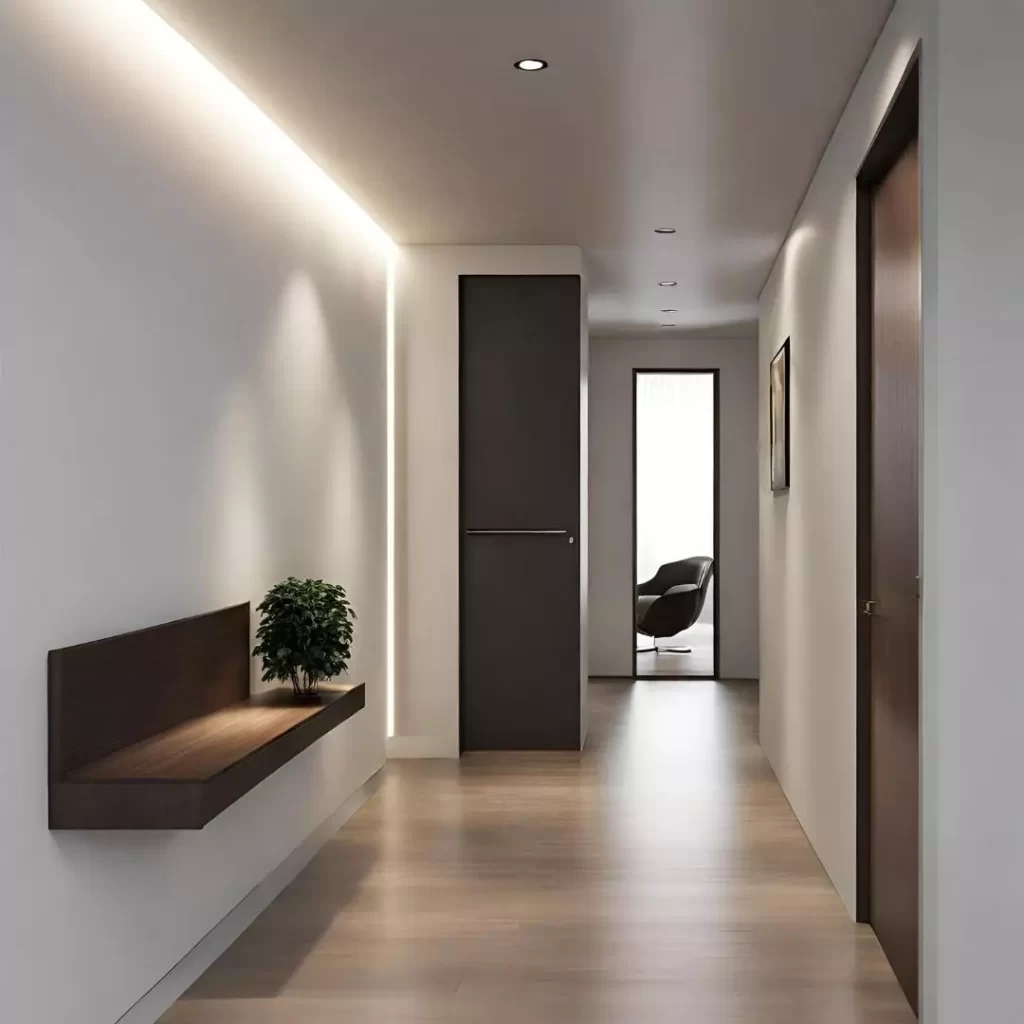
Examples include benches with built-in storage, console tables that can double as workstations or wall-mounted shelves that combine display and storage functionalities.
This ensures that every piece contributes to the corridor’s functionality.
Floating Furniture: Consider using floating or wall-mounted furniture to create an illusion of more space.

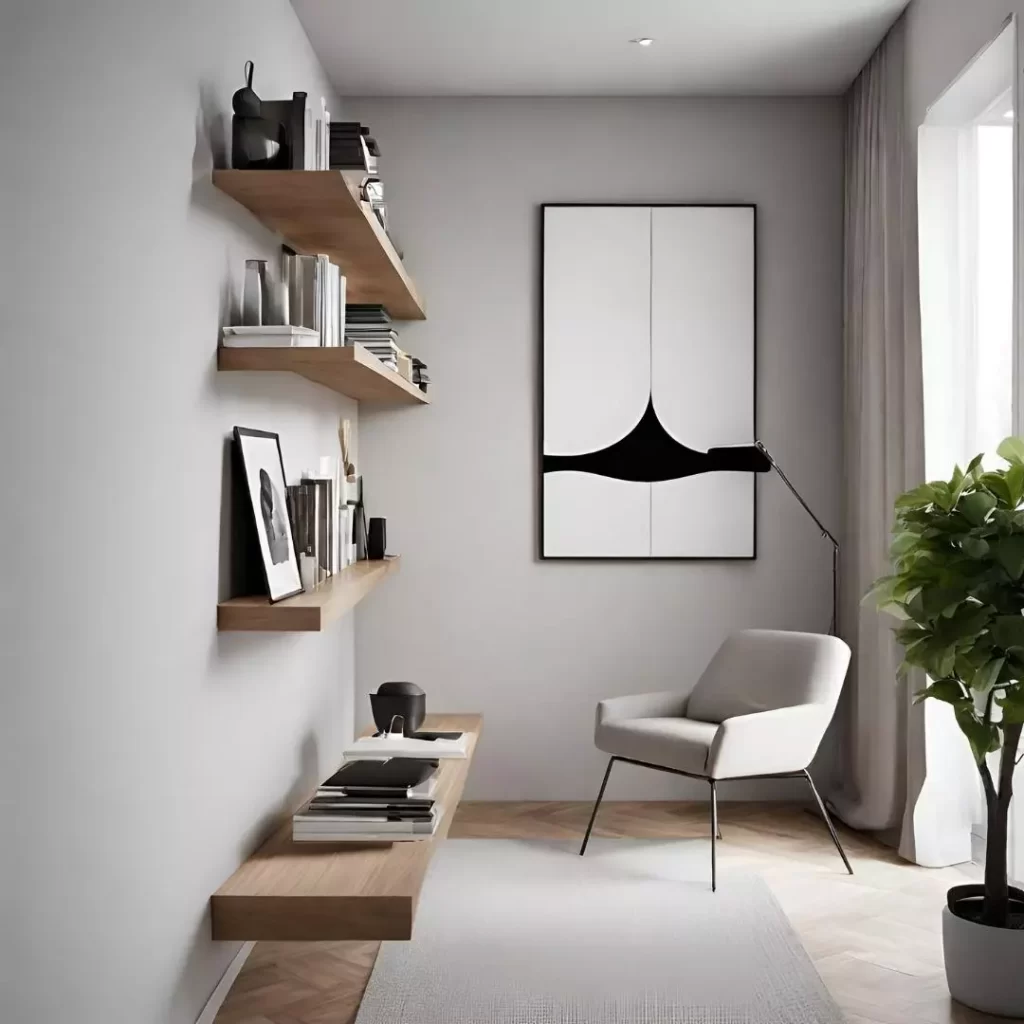
Floating shelves, wall-mounted desks, or compact console tables not only free up floor space but also add a touch of modern aesthetics to the corridor design.
Niche Utilization: Identify and capitalize on any architectural niches or alcoves within the corridor.
These spaces can be transformed into cozy reading nooks, mini home offices, or display areas.

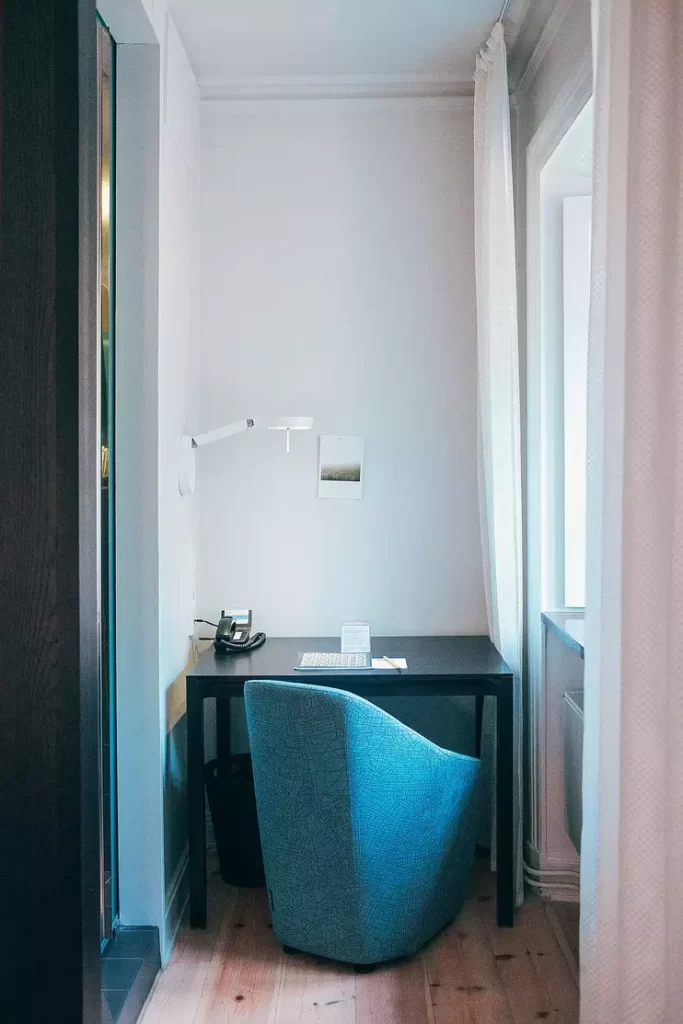
Custom-built furniture or tailored seating can optimize the use of these unique architectural features.
Traffic Flow Considerations: Arrange furniture in a way that promotes smooth traffic flow through the corridor.

Avoid bulky or obstructive pieces that may impede movement.
Instead, focus on streamlined and space-saving options that enhance the functionality without sacrificing accessibility.
G. Elevating Corridor Walls with Meaningful Artwork:
Gallery-style Displays: Transform the corridor into a captivating gallery by adorning the walls with carefully curated artwork.


Consider creating a gallery-style display with a mix of framed paintings, photographs, or other art pieces. This not only adds visual interest but also provides a unique and personal touch to the corridor.
Statement Pieces: Incorporate statement artworks that serve as focal points within the corridor. Large, eye-catching pieces can draw attention and create a sense of drama, turning the corridor into more than just a passageway but a curated art space.

Personal Memorabilia: Infuse the corridor with personal touches by displaying memorabilia, family photos, or travel souvenirs. This not only adds a sense of warmth and personality but also transforms the corridor into a nostalgic journey through the lives of the occupants.
H. Utilizing Décor Elements to Infuse Personality and Character into the Space:
Mirrors and Reflective Surfaces: Incorporate mirrors strategically to create an illusion of space and amplify natural light.

Additionally, mirrors can serve as decorative elements, adding depth and visual interest to the corridor. Consider decorative frames or arrangements to enhance their aesthetic impact.
Plants and Greenery: Bring the outdoors inside by introducing plants or small indoor gardens.
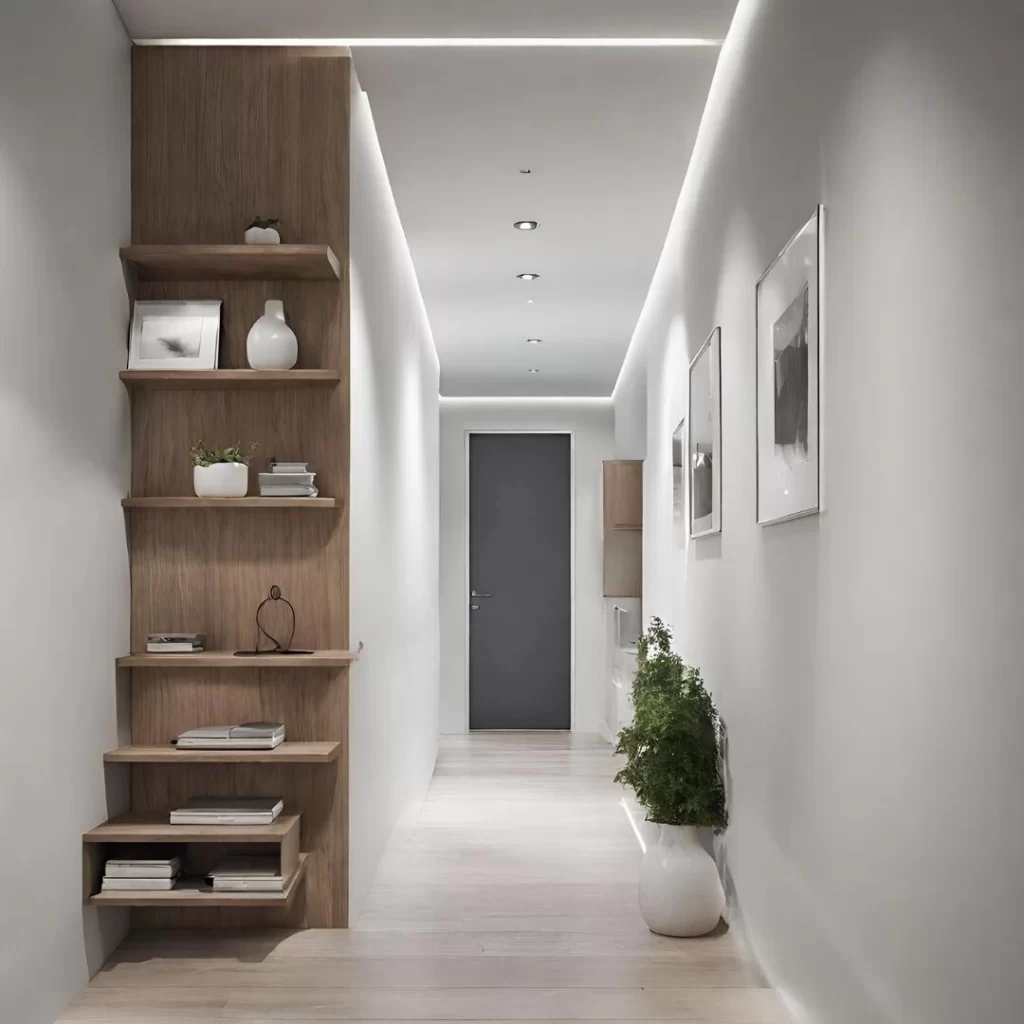

Not only do plants contribute to a healthier indoor environment, but they also add a touch of nature and vitality to the corridor.
I. Smart Corridor Design Solutions for a Seamless and Interactive Experience:
Motion Sensors and Lighting Automation: Implement motion sensors to activate lighting automatically as individuals move through the corridor.
This not only enhances energy efficiency but also contributes to a seamless and well-lit passage.
Consider smart lighting systems that allow users to customize color temperatures and intensity, creating different moods.
Smart Home Integration: Integrate the corridor into the broader smart home ecosystem.
This includes connecting lighting, climate control, and security systems to a central smart home hub.
Users can then manage these aspects remotely through mobile devices, ensuring comfort and security even when away from home.
Biometric Security Features: Enhance the security of the corridor through the integration of biometric technology.
This could include fingerprint or facial recognition systems for access control, ensuring that the corridor remains a secure passage within the home.
In closing, may your corridors become more than mere passageways—they can be the vibrant threads that weave together the tapestry of your home, creating a space that resonates with your individuality and elevates your daily living experience.
If you find yourself seeking guidance or expertise in bringing your vision to life, we are here to help.
Contact us today to turn your interiors into a stylish and functional space that truly reflects your lifestyle and design preferences.
